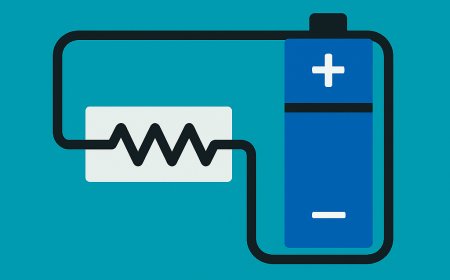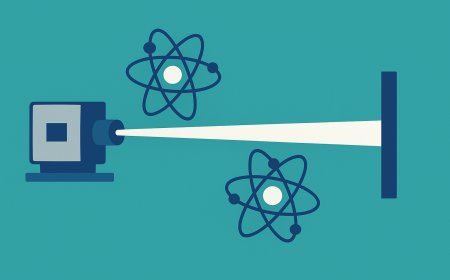Magnetism Explained: How Magnetic Fields and Materials Create the Forces That Power Our World
Explore the science of magnetism, from the behavior of permanent magnets and electromagnets to Earth’s magnetic field and the interplay between electricity and magnetism. Learn how magnetic forces work, why some materials become magnetic, and how devices like motors, generators, and MRI machines harness this invisible force.

Magnetism is the reason compass needles point north, refrigerator notes stick without tape, and electric motors spin to power fans and appliances. Although magnets seem everyday, the forces they produce arise from fundamental physical principles that tie together electricity, atoms and motion. Understanding magnetism reveals how magnetic fields arise, why only certain materials become permanent magnets, and how society harnesses these forces in technologies from medical imaging to levitating trains.
Origins of magnetic fields
At its core, magnetism is a manifestation of moving electric charge. According to electromagnetism, a charged particle creates an electric field around it. When that charge moves, it generates a magnetic field as well. In atoms, electrons whizzing around nuclei and spinning on their own axes behave like tiny current loops, producing tiny magnetic fields. In most materials, these microscopic fields point in random directions and cancel each other out. In ferromagnetic substances like iron, cobalt and nickel, electrons’ magnetic moments tend to align, leading to an overall magnetic field. Groups of aligned atoms form magnetic domains that behave like small bar magnets inside the material.
Permanent magnets vs. electromagnets
A permanent magnet contains domains that remain aligned even after the external magnetic field is removed. This alignment is preserved because of the material’s crystal structure and interactions between electrons. Each magnet has two poles, labeled north and south. Magnetic field lines emerge from the north pole, curve through space, and re-enter the south pole. Like poles repel and opposite poles attract because the field lines push and pull on each other.
An electromagnet, by contrast, generates a magnetic field only when electric current flows. Wrap a coil of insulated wire around an iron core and connect the ends to a battery; the moving charges in the wire create a magnetic field that magnetizes the core, producing a much stronger field than the coil alone. The strength of an electromagnet depends on the number of coil turns and the current. Unlike permanent magnets, electromagnets can be turned on and off and have adjustable strength. This flexibility makes them invaluable in devices like electric bells, MRI machines and scrapyard cranes that pick up and drop heavy metal objects.
Types of magnetic behavior
Materials respond to external magnetic fields in different ways. Ferromagnetic materials, such as iron, strongly attract magnetic field lines and can become permanent magnets. Paramagnetic substances, including aluminum and oxygen, exhibit weak attraction because their atomic magnetic moments align slightly with an applied field but do not form permanent domains. Diamagnetic materials, like copper, water and bismuth, actually repel magnetic fields; induced currents within these materials oppose the applied field. You can demonstrate diamagnetism by placing a strong magnet near a thin stream of water from a faucet—the water bends away ever so slightly from the magnet.
Earth’s magnetic field
Earth itself is a giant magnet. The planet’s outer core consists of molten iron and nickel that convect due to heat from the inner core. These churning, electrically conducting fluids act like a massive dynamo, generating a magnetic field that extends far into space. The magnetic field protects Earth from the solar wind, streams of charged particles emitted by the Sun. The field funnels some of these particles toward the poles, producing the auroras. Because the outer core flow changes over time, Earth’s magnetic field drifts and occasionally flips polarity over geological timescales, meaning that north and south magnetic poles swap places.
A simple compass needle aligns with Earth’s magnetic field, pointing toward the magnetic north pole, which currently lies in the Arctic region of Canada. Navigators have used this property for centuries. However, magnetic north does not coincide exactly with geographic north, so charts include corrections called declinations. Understanding Earth’s magnetism helps geophysicists map subsurface structures and study plate tectonics.
Magnetism and electricity
Magnetism and electricity are inseparable. Changing magnetic fields induce electric currents, and changing currents produce magnetic fields. This interdependence is captured in Faraday’s law of induction and Ampère’s law, two of the equations that James Clerk Maxwell combined into the unified theory of electromagnetism. When a coil of wire rotates in a magnetic field, the changing magnetic flux through the coil induces a current; that is how generators convert mechanical energy into electrical energy. Conversely, when current flows through a motor’s coils, the magnetic field interacts with permanent magnets to produce torque; that is how motors convert electrical energy into motion.
Modern electrical infrastructure relies on this interplay. Transformers use alternating magnetic fields to transfer energy between coils without a direct electrical connection, allowing efficient voltage changes. Loudspeakers turn currents into sound using coils and magnets. Induction cooktops use rapidly oscillating magnetic fields to heat cookware directly.
Magnetic storage and imaging
Magnetic phenomena enable data storage and powerful diagnostic tools. In hard drives and magnetic tapes, tiny regions of a ferromagnetic coating are magnetized in different directions to represent bits of information. Reading and writing heads consist of electromagnets that switch the magnetization of these microscopic domains. Even newer technologies like magnetic random-access memory (MRAM) use similar principles but with faster switching speeds and no moving parts.
Magnetic resonance imaging (MRI) machines take advantage of the magnetic properties of atomic nuclei. Inside an MRI scanner, a strong magnetic field aligns the nuclei of hydrogen atoms in your body. Pulses of radio waves slightly tip these spins, and as they relax back, they emit signals that sensors detect. Computers reconstruct these signals into detailed images of tissues without ionizing radiation. The powerful magnets inside an MRI are superconducting electromagnets cooled to near absolute zero.
Everyday demonstrations
You can explore magnetism at home with simple experiments. Scatter iron filings on a sheet of paper and place a bar magnet beneath; the filings align along the field lines, sketching out the invisible magnetic landscape. Wrap insulated wire around a nail, connect it to a battery briefly, and you create a basic electromagnet capable of picking up paper clips. Use a compass near a current-carrying wire and observe how the needle deflects when current flows.
From guiding migratory animals to storing your digital photos and powering transportation, magnetism permeates our world. By understanding the underlying principles—moving charges, aligned electrons and changing fields—you gain insight into why magnets attract and repel, how electric motors spin and generators produce electricity, and why the Earth itself acts as a giant magnet. Magnetism is not just a curious force; it is a cornerstone of modern technology and a beautiful example of the unity of nature’s forces.
What's Your Reaction?













































































































